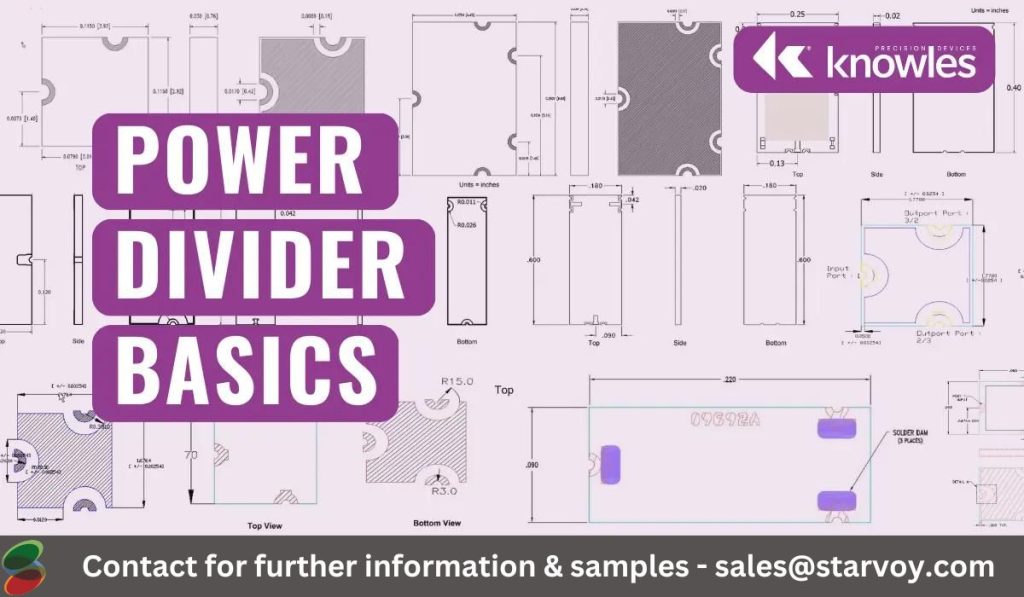Knowles: Power Divider Basics
Starvoy Technolgies represents Knowles Precision Devices across Canada – the below recently appeared on Knowles’ blog. For further information on the below – reach out to your account manager, or [email protected]
Radio frequency (RF) power dividers are designed to split an incoming signal into multiple outputs such that there’s a portion of the original signal’s power in each output. Given their critical function, power dividers play a particularly important role in antenna systems, telecommunications, and signal processing.

Though it’s possible to have dividers that split a signal into more than three outputs, two-way dividers and three-way dividers are most prevalent. With many use cases and means of splitting a signal, the market is full of different kinds of power dividers. The most common are:
- Reactive Power Dividers leverage capacitors and inductors to divide power. Since they don’t dissipate much power, they’re a high-frequency option; however, reactive power dividers operate over a narrow frequency band.
- Resistive Power Dividers use resistors to divide power. Since they dissipate much of the input power as heat, they’re not the most efficient. These are a good option in low-power applications or when the frequency range is wide.
- Hybrid or Wilkinson Power Dividers rely on quarter-wave transmission lines and resistors. These are adept at balancing power handling (i.e., power division and isolation), efficiency, and bandwidth.
When selecting a power divider, here are the most important performance specifications to consider:
- Amplitude Balance: Power dividers are responsible for splitting power equally across output ports, so amplitude, or the difference in signal strength between the output ports, should be minimal.
- Insertion Loss: Inserting a power divider into a circuit causes signal power losses; lower insertion loss is preferred.
- Isolation: Lower isolation indicates that a power divider can successfully separate output ports from each other to minimize interaction between different parts of the system.
- Phase Balance: In applications where specific phase values are important, like with phased antennas, pay attention to phase balance. This measurement identifies the phase difference between output ports.
- Voltage Standing Wave Radio (VSWR): A lower VSWR indicates a better impedance match between the divider and the system, and by extension, less reflected power.
View Catalogue & Datasheets
P.s. If you don't see what you are looking for reach out to discuss custom options.

